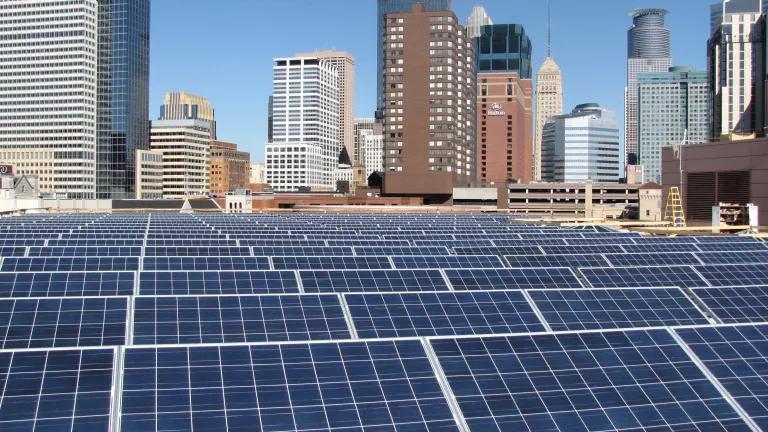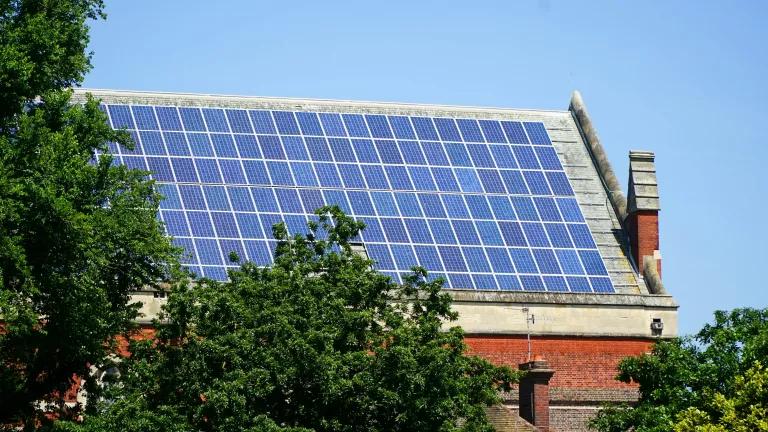Hydrogen in Buildings: The Poster Child of Tech-Crastination
Tech-crastination is an appropriate characterization of the gas industry’s claims around the suitability of hydrogen as a solution to decarbonize buildings, even though heating homes with hydrogen is one of the least-efficient and most costly options available.

iStock/audioundwerbung
Tech-crastination refers to cases where the promise of a future technology diminishes interest in the deployment of existing, reliable, and cost-effective technologies. Tech-crastination is an appropriate characterization of the gas industry’s claims around the suitability of hydrogen as a solution to decarbonize buildings, even though heating homes with hydrogen is one of the least-efficient and most costly options available.
Green hydrogen has emerged as the darling of the gas industry and those considering pathways to reach aggressive climate targets. It is a promising solution to clean up the most challenging sectors of the economy—aviation, maritime shipping, and steelmaking—where electrification faces technical hurdles. However, it is an inefficient and costly solution outside of those narrow applications where it’s uniquely suited for the task.
For example, green hydrogen is a woefully inefficient and risky solution to decarbonize buildings relative to proven and readily available high-efficiency electric heat pumps. Despite this reality, and to protect and perpetuate their business model, some in the gas industry are increasingly broadcasting the merits of hydrogen’s widespread use in buildings and setting up the foundations for its deployment. This could derail investments in building efficiency and electrification, undermine climate progress, and lock customers into expensive and illusive hydrogen-heavy pathways. Burning hydrogen in homes could also worsen indoor air pollution.
Policymakers should cut through the industry noise and decisively pursue widespread electrification as the lower-cost and lower-risk solution to decarbonize buildings.

Hydrogen use to heat buildings receives a meagre “F” grade on the now-famous Liebreich “hydrogen ladder.”
Hydrogen use in buildings creates harmful air pollution
Burning hydrogen generates harmful air pollutants, and the extent to which those could be mitigated remains uncertain. This reality is acknowledged by California gas utilities; they recognize that, due to hydrogen’s chemical characteristics, blends of hydrogen and methane may even yield higher emissions of health-damaging nitrogen oxides than methane alone. In contrast, heat pumps produce zero indoor air pollution by eliminating combustion, and provide a robust pathway towards zero-emission buildings as the electricity supply transitions away from fossil fuel generation.
An inefficient and risky solution relative to direct and efficient electrification
Hydrogen can hypothetically substitute for methane gas in heating buildings. However, a range of studies (here and here) estimate that heating a home with green hydrogen would require 5 to 6 times more renewable electricity than heating that same home with a highly efficient heat pump. More than 20 percent of the electricity is lost in producing the hydrogen and readily available high-efficiency heat pumps can be 4.5 times more efficient relative to the still pre-commercial hydrogen boilers (figure below). Opting for hydrogen instead of a high-efficiency heat pump is akin to choosing to take your car to work, spend 30 minutes in gridlock traffic and pay $35 for parking to boot, instead of biking 10 minutes from home.

Relative Efficiency of Heating Electricity in Heat Pumps vs. Electrolytic Hydrogen in Boilers from a study conducted by the U.K. Climate Change Committee
This wide efficiency differential has important implications on both the costs and risk profile of hydrogen-heavy pathways. Achieving the U.S. climate goals will require a substantial increase in wind and solar deployment. An unnecessary fivefold multiplier on this renewable buildout would massively increase the difficulty of cleaning up our economy. It also raises potential hydrogen supply risks, which must be aptly considered in evaluating the suitability of an extensive hydrogen agenda. A diverse group of European stakeholders has urged their governments to steer clear of pursuing hydrogen as a widespread solution in buildings on account of those critical limitations. Policymakers across the globe should heed this recommendation.
The “no-disruption” slogan is a myth: hydrogen requires modified or entirely new pipelines and appliances
Some in the gas industry argue that using hydrogen to heat buildings is a “no-disruption” solution relative to electrification, owing to the potential to utilize the existing gas network to transport the hydrogen. But this claim ignores some critical challenges.
Hydrogen is a fundamentally different gas relative to methane gas:
- When blended at high shares with methane, its chemical properties cause embrittlement to steel gas pipelines and diminish their integrity;
- It’s a much smaller molecule than methane and is thereby more prone to leakage, with important implications on the required pipe materials.
Hydrogen could be blended with methane in low proportions with minimal investments into the existing gas system—perhaps up to 7 percent by energy, although this is subject to ongoing investigations. However, any quantity of hydrogen exceeding the 7 percent threshold is likely to require either major network repurposing measures or the buildout of an entirely new dedicated hydrogen pipeline network.
Our appliances are also not made to run on a high mix of hydrogen; gas boilers, furnaces and cookstoves would have to be replaced with hydrogen-compatible alternatives, which are not currently available to consumers.
The high costs and effort associated with a large-scale conversion to hydrogen therefore decidedly impugn the glossy “no disruption” marketing claim.
Risks of expensive energy system “supersizing”
Some claim that widespread hydrogen use in buildings would deliver huge savings on electric transmission and distribution infrastructure relative to the electrification of buildings. However, this premise is questionable as it selectively overlooks the broader picture. While it may deliver some savings on electricity distribution infrastructure, a hydrogen-heavy pathway would require large incremental infrastructure elsewhere on the system due to its much lower efficiency relative to direct electrification and the need for a hydrogen-compatible network.
A study by the European Climate Foundation found that the savings on electric network infrastructure in a high hydrogen case would be much smaller than the increased costs in renewable projects, electrolyzers, and storage facilities to produce and store green hydrogen, and in the upkeep and refurbishing of the gas network to transport the hydrogen. This energy infrastructure “supersizing” sharply increases energy system costs and household energy bills relative to high electrification cases.

Source: Towards Fossil-Free Energy in 2050, European Climate Foundation, 2019.
Misleading claims are intended to delay electrification and could produce expensive lock-in effects
Marketing claims around the merits of the future, widespread hydrogen use in buildings could dull support for electrification among decision makers and reduce related investments. It seems likely that these dubious claims are often made with the intention of delaying crucial investments in the transition away from fossil infrastructure. This tech-crastination risks undermining climate progress, as numerous studies (here and here) have concluded that rapid building electrification and efficiency retrofits in this decade are critical to meeting both the new U.S. 2030 Paris target and the 2050 net-zero greenhouse emissions target. In addition, continuously pouring investments into the existing gas system with future repurposing to hydrogen in mind (an attractive proposition to gas utilities) risks locking customers into an expensive pathway to deep decarbonization. It could also result in the stranding of gas or hydrogen networks, following an ultimate switch to electrification, the costs of which would be shouldered by customers.
Recommendations for Policymakers: Ignore the Noise and Prioritize Building Electrification and Efficiency
Policymakers should prioritize building electrification and efficiency as the demonstrably more cost-effective widespread solution for buildings. More specifically:
- Policymakers should cut through the noise and decisively proceed with the widespread roll-out of high-efficiency heat pumps in buildings, energy efficiency upgrades, and the development of smart demand management policies. Hydrogen may have a supportive role in niche contexts, and such a proposition could be investigated based on independent assessments.
- Policymakers should exercise caution with efforts to keep pouring money into maintaining and expanding the gas network, premised on the future repurposing to hydrogen, and instead deploy a planning process for its gradual decommissioning in a manner that protects customers and workers. Repurposing portions of the gas network is a compelling proposition to serve challenging sectors that may require priority access to hydrogen—such as steelmaking and maritime shipping—and this targeted opportunity should be examined further.
The “code red” flashed by the newest UN climate report confirms we cannot afford to give credence to delay tactics and derail proven actions on climate that are necessary today. Green hydrogen has the potential to play a pivotal role in reducing emissions in hard-to-electrify sectors. But buildings are not the place for it.




